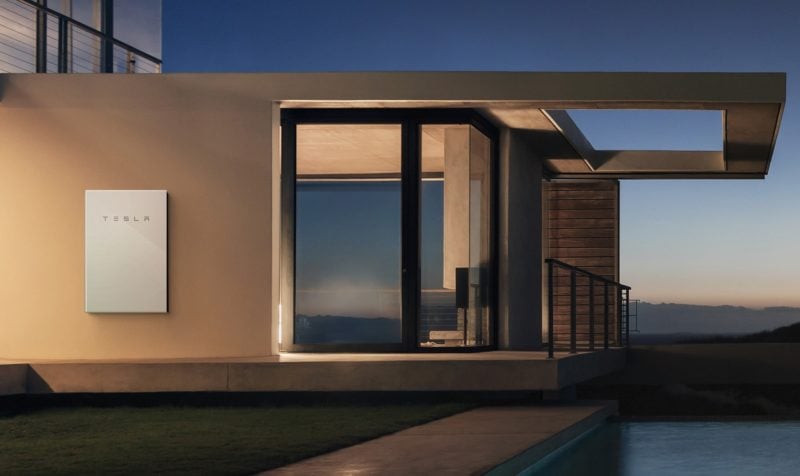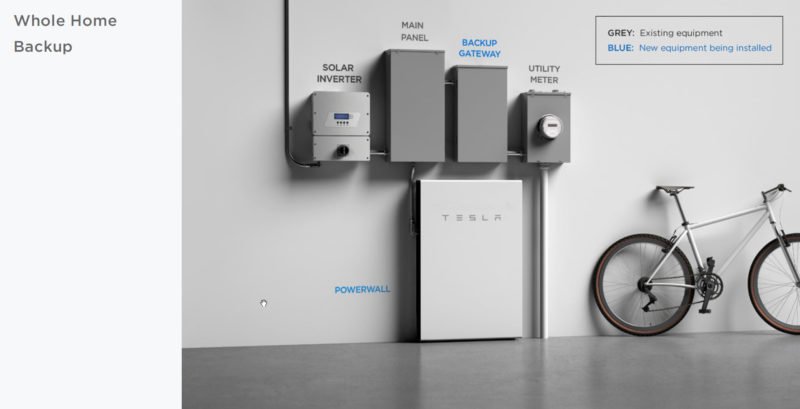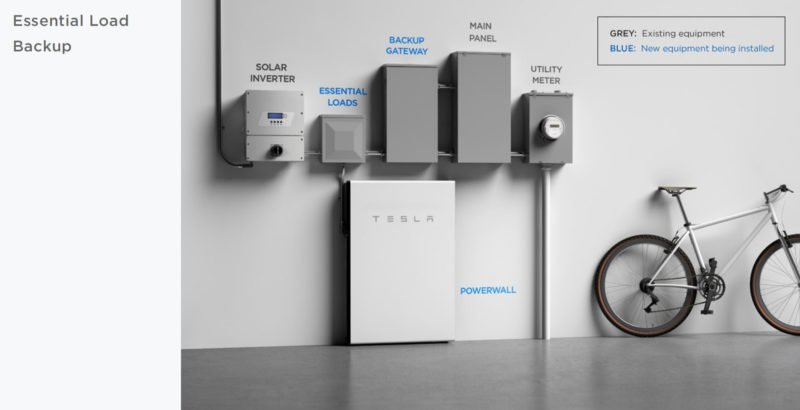
Tesla Powerwall Overview
The Tesla Powerwall is Tesla’s residential stationary energy storage product designed for homeowners to store energy utilizing rechargeable lithium-ion batteries. The idea behind the Powerwall is to provide homeowners a way to store energy generated from solar, optimize electricity use for time-of-use electric plans, provide backup power during periods of brown-outs and blackouts, and provide power for off-grid use.
Tesla Powerwall Specs
Tesla has two versions of the Powerwall. The Tesla Powerwall 1 was first introduced in 2015, but was quickly replaced in 2016 with the Powerwall 2.
The Tesla Powerwall 2 is far superior compared to the first version providing improved battery capacity, output power, a wider range of operating temperatures, and a far better warranty. A Powerwall 3 has not yet been announced at this time however, given Tesla’s recent push for home energy and storage, we wouldn’t be surprised to see a Powerwall 3 in the works.
| Manufacturer | Tesla | Tesla |
|---|---|---|
| Model | Powerwall 1 | Powerwall 2 |
| Battery Type | Li-Ion | Li-Ion |
| Capacity | 6.4 (kWh) | 13.5 (kWh) |
| Power | 2kW continuous | 7kW peak / 5kW continuous |
| Operating Temperature | −4 to 110 °F (−20 to 43 °C) | −4 to 122 °F (−20 to 50 °C) |
| Size | 51.3 in × 34 in × 7.2 in (1303 mm x 864 mm x 183 mm) | 45.3 in × 29.6 in × 5.75 in (1150 mm x 753 mm x 147 mm) |
| Weight | 214 lb (97 kg) | 251.3 lb (114.0 kg) |
| Price | $3,000 | $6,500 |
| Warranty | 10 Years (5,000 cycles) | 10 Years (Unlimited cycles for solar self-consumption / backup only or 37.80 MWh of aggregate throughput for any other application or combination of applications) |
Tesla Powerwall Installation
Installation for the Tesla Powerwall is relatively simple. There are two main components that need to be installed in a home for the Powerwall system. This includes the Powerwall itself as well as the Backup Gateway.
In the essential loads backup configuration which we’ll get into in a little bit, a new electric sub-panel will also be installed. These are all typically installed wall-mounted. The Powerwall can also be installed floor mounted.
Tesla Powerwall Configurations
There are two different wiring configurations for the Tesla Powerwall, whole home backup and essential loads backup which are detailed in the Tesla Powerwall Welcome Guide. Let’s take a look at what this means.
Whole Home Backup Configuration
The whole home backup configuration is the simpler of the configurations. In this configuration, the Powerwall will provide complete battery backup to the entire home and simply involves installation of the Powerwall directly into the main electrical panel of the home.

Essential Load Backup Configuration
The essential load backup configuration is slightly more complex in that it involves the installation of a new electric sub-panel into the home where essential loads will be installed. The Powerwall will then be installed into the sub-panel and provide backup power for those loads. This can help substantially lower the cost of a Powerwall installation or provide substantially longer runtime as non-critical equipment such as a pool heater for example can be excluded while circuits for critical equipment such as medical devices can be included.

Tesla Powerwall Cost
The Tesla Powerwall costs $6,500 for a single Powerwall (13.5 kWh) and an additional $1,100 for supporting hardware which includes the inverter and Backup Gateway making the price of the entry level Tesla Powerwall around $7,600. Additional Powerwalls can be added at a cost of an additional $6,500 each (up to 10 Powerwalls total) and can be linked together to provide additional battery capacity (up to 1,350 kWh total). Additional supporting hardware for each additional Powerwall is not required.
Be aware, this is just the cost of the Tesla Powerwall system. It does not include installation costs which can depend on your location, the type of electrical wiring in your house, and other factors.
Depending on your location, some states provide incentives for the purchase and installation of a Powerwall or similar residential battery systems. California for example provides incentives through the Self-Generation Incentive Program (SGIP) which can provide incentives up to $400 per kWh ($0.40 per Wh).
How to Buy the Tesla Powerwall
The Tesla Powerwall can be purchased at the Tesla website here. A reservation fee of $99 is required to reserve a system.

0 Comments